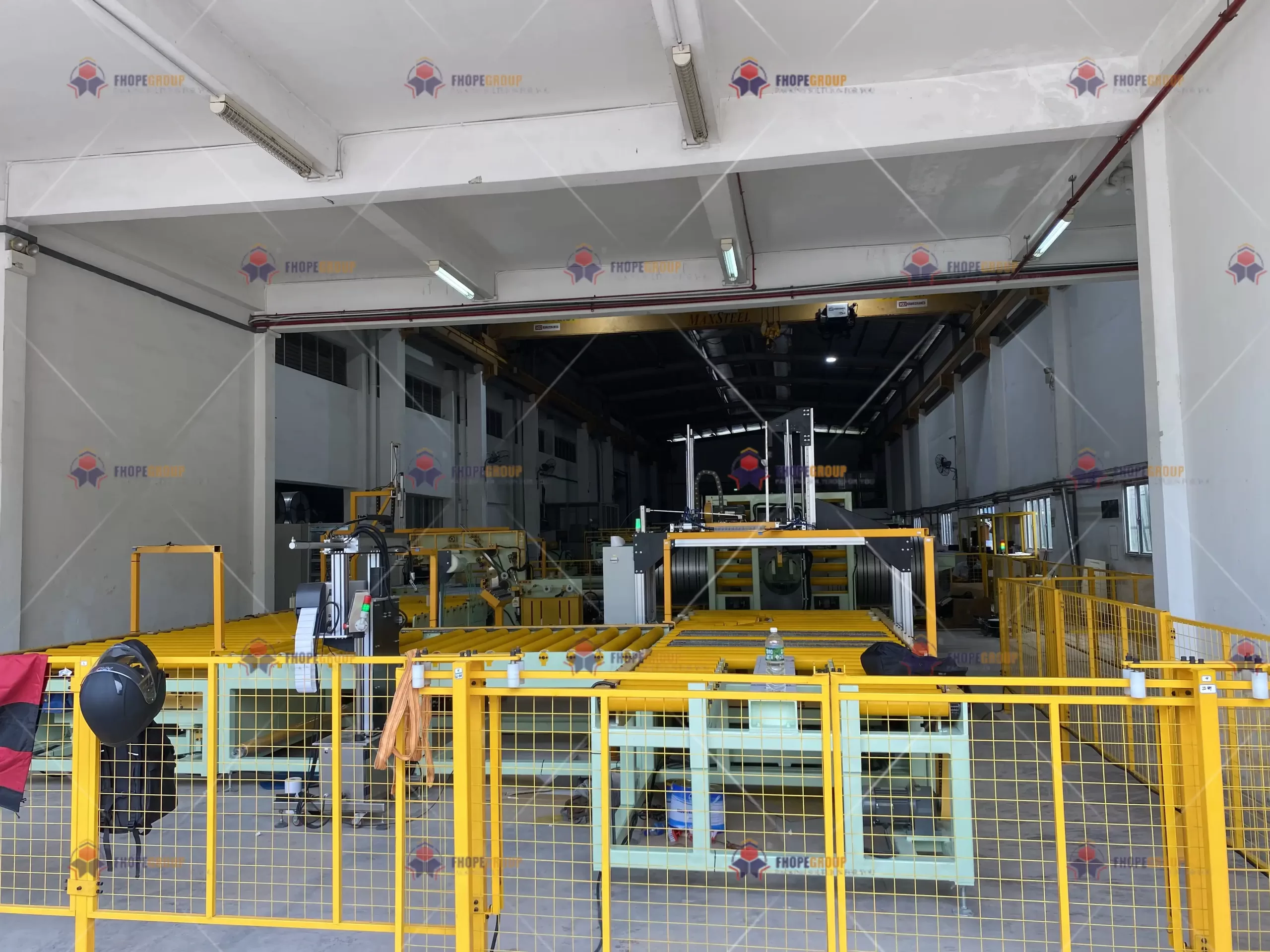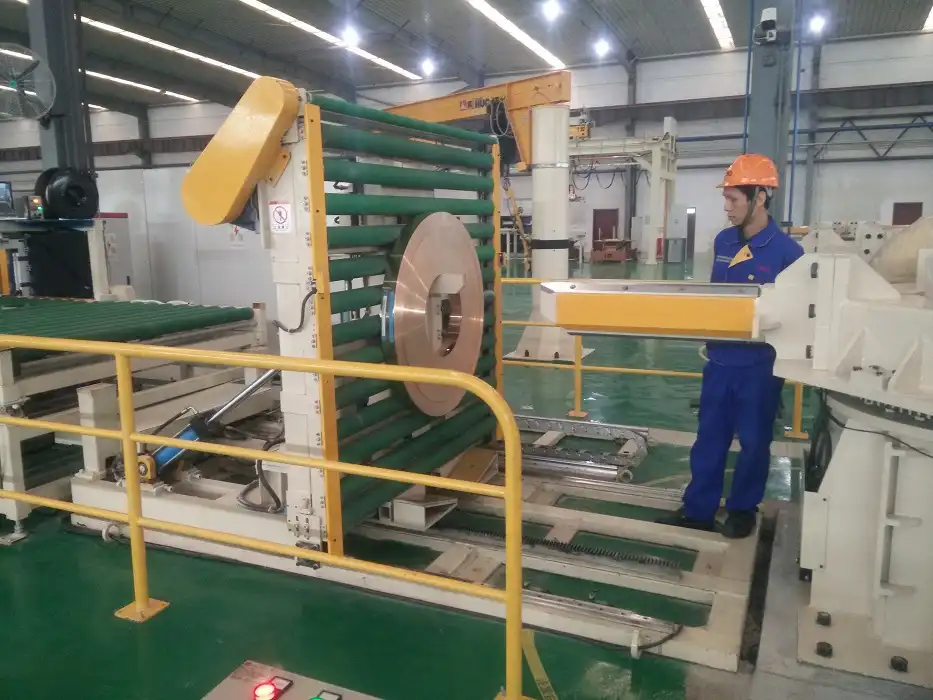Feature Comparison: Budget-Friendly vs. High-End Steel Coil Packing Systems

Understanding Steel Coil Packing Systems: Budget vs. Premium
Steel coil packing systems are indispensable assets in industries such as automotive manufacturing, construction, and metal service centers. Their primary role is to protect valuable steel coils from damage during handling, storage, and transit, while also improving operational throughput. Effective coil packaging machinery ensures product integrity and streamlines logistics. When sourcing these systems, fabricators and processors face a key decision: invest in a cost-effective, budget-friendly unit or allocate resources to a feature-rich, high-end system. This guide examines the critical differences to help inform your investment.
1. Initial Investment: Balancing Upfront Cost and Long-Term Value
The initial purchase price is often a major consideration, especially for small to medium-sized enterprises (SMEs) or operations with constrained capital expenditure budgets.
- Budget-Friendly Systems: These offer a lower entry barrier, making automated or semi-automated coil packaging accessible. However, the initial savings might be offset by potential long-term costs related to maintenance, potential downtime, or higher labor requirements due to less automation.
- High-End Systems: Characterized by a significantly higher upfront investment, these systems are built with advanced automation, robust components, and sophisticated controls. While the initial outlay is greater, the potential for reduced labor costs, minimal downtime, enhanced durability, and higher throughput can lead to a lower total cost of ownership (TCO) over the system's lifespan.
2. Performance and Efficiency: Throughput Matters
Operational speed and efficiency directly impact profitability. The difference between budget and premium systems is often most apparent here.
- High-End Systems: Engineered for maximum productivity and minimal cycle times, these systems often feature full automation for processes like coil wrapping, strapping, labeling, and palletizing. They excel in high-volume environments, handling significant throughput with consistency and reduced need for manual oversight. Think of large steel mills or service centers processing hundreds or thousands of coils daily.
- Budget-Friendly Systems: Suitable for lower-volume operations, these systems might require more manual intervention, such as loading/unloading coils, initiating cycles, or adjusting settings for different coil dimensions. While effective for their intended scale, they may struggle to keep pace with rapidly growing demand or high-speed production lines, potentially creating bottlenecks.
3. Durability and Build Quality: Built for the Shop Floor
The demanding nature of metal fabrication and processing environments requires robust equipment.
- High-End Systems: Typically constructed using heavy-gauge steel, premium components (motors, drives, sensors), and finishes resistant to wear, dust, and corrosion. They are designed for continuous, heavy-duty operation (e.g., 24/7 shifts) and longevity in challenging industrial settings. Features might include sealed bearings, protective enclosures for electronics, and corrosion-resistant materials for specific components.
- Budget-Friendly Systems: While functional, they may utilize lighter-gauge materials or less robust components to achieve a lower price point. This can lead to faster wear and tear, potentially resulting in more frequent maintenance or earlier replacement, especially under continuous or heavy usage. Operations in less demanding environments or with intermittent use might find this level of durability adequate.
4. Automation and Technological Integration: Embracing Smart Manufacturing
Automation enhances efficiency, consistency, and safety. High-end systems lead the way in technological sophistication.
- High-End Systems: Often incorporate advanced automation features like Programmable Logic Controllers (PLCs), Human-Machine Interfaces (HMIs) for intuitive operation, automatic coil dimension sensing, recipe management for different packaging requirements, and seamless integration with upstream/downstream equipment (conveyors, AGVs) and plant management systems (MES/ERP). Some are Industry 4.0 ready, enabling remote monitoring, diagnostics, and predictive maintenance.
- Budget-Friendly Systems: Automation is typically more basic, possibly semi-automatic where operators initiate key steps. They might lack sophisticated sensors or the ability to integrate deeply with other factory systems. Manual adjustments are often required for different coil sizes or packaging specifications, increasing cycle time and the potential for operator error.
5. Energy Efficiency and Sustainability: Reducing Operational Costs
Energy consumption is a growing concern, impacting both operational costs and environmental footprint.
- High-End Systems: Increasingly designed with energy efficiency in mind. Features may include premium efficiency motors, variable frequency drives (VFDs) that adjust power consumption based on load, and optimized cycle logic to minimize energy usage during idle times. This focus aligns with corporate sustainability goals and can yield significant savings on electricity bills over the machine's life.
- Budget-Friendly Systems: May use standard-efficiency components and simpler control systems that consume more power relative to the work performed. While functional, they might not offer the same level of energy optimization, potentially leading to higher long-term operating expenses.

6. Safety Features: Protecting Personnel
Workplace safety is paramount in any industrial operation involving heavy materials and automated machinery.
- High-End Systems: Typically equipped with comprehensive safety features adhering to stringent standards (e.g., ISO, ANSI, OSHA requirements). This often includes safety interlocks on access doors, light curtains or area scanners to detect personnel presence, emergency stop circuits readily accessible, physical guarding, and integrated safety PLCs for reliable monitoring and control of safety functions.
- Budget-Friendly Systems: Will include basic safety measures (e.g., E-stops, some guarding), but might lack the more sophisticated sensing devices or integrated safety controls found on premium models. Ensuring compliance with local safety regulations might require additional assessment or modification.
7. Customization and Flexibility: Adapting to Specific Needs
Coil dimensions, weights, and packaging requirements can vary significantly.
- High-End Systems: Often offer greater flexibility and customization options. Manufacturers may work with clients to tailor the system to specific coil size ranges (ID/OD/width), weights, packaging materials (stretch film types, VCI paper, strapping requirements), and integration needs. Programmable controls allow operators to easily switch between pre-set recipes for different products.
- Budget-Friendly Systems: Typically designed for a more standardized range of applications. Customization options may be limited, and adapting the machine to non-standard coils or unique packaging protocols might be difficult or require significant manual adjustment.
8. Maintenance and Support: Minimizing Downtime
Reliability and access to support are crucial for maintaining production schedules.
- High-End Systems: Usually backed by more robust manufacturer support, including comprehensive documentation, readily available spare parts, and access to skilled field service technicians. Features like remote diagnostics allow technicians to troubleshoot issues without an immediate site visit. Predictive maintenance capabilities, using sensors to monitor component health, can help schedule maintenance proactively and avoid unexpected failures.
- Budget-Friendly Systems: Support levels may vary. Access to spare parts or specialized technical support might be less immediate. Maintenance often relies more on reactive measures (fixing things after they break) rather than predictive or preventative strategies, potentially leading to longer or more frequent periods of downtime.
9. Long-Term Value: Calculating Total Cost of Ownership (TCO)
A true comparison requires looking beyond the sticker price to the total cost over the equipment's useful life.
- High-End Systems: Despite the higher initial cost, factors like increased throughput, reduced labor needs, lower energy consumption, enhanced durability leading to fewer repairs, and potentially higher resale value contribute to a favorable TCO, especially in demanding, high-volume operations. The ROI is realized through sustained operational efficiency and reliability.
- Budget-Friendly Systems: Offer immediate cost savings but may incur higher cumulative costs over time due to factors like increased maintenance, potential replacement needs, lower efficiency impacting productivity, and potentially higher labor involvement. The TCO might exceed that of a high-end system in scenarios where reliability and throughput are critical.
10. Scalability and Future-Proofing: Preparing for Growth
Business needs evolve. A packing system should ideally support future growth and technological advancements.

- High-End Systems: Often designed with modularity and scalability in mind. It might be possible to add features, increase automation levels, or integrate the system into a larger automated line later on. Their advanced control platforms are generally more adaptable to future software updates or integration requirements. This offers a degree of future-proofing for the investment.
- Budget-Friendly Systems: May have limited upgrade paths or scalability options. Significant increases in production volume or changes in packaging requirements might necessitate replacing the entire system sooner than anticipated, representing a potentially larger future expense.
Conclusion: Choosing the Right Steel Coil Packing System
The decision between a budget-friendly and a high-end steel coil packing system hinges on a careful assessment of your specific operational requirements, production volume, budget constraints, and long-term strategic goals.
- Budget-friendly systems can be a viable starting point for businesses with lower throughput needs, limited capital, or less demanding operating conditions.
- High-end systems represent a significant investment but deliver substantial benefits in terms of performance, automation, durability, safety, and long-term value, making them well-suited for high-volume producers, companies prioritizing efficiency and reliability, and those planning for future growth or integration into smart factory environments.
By thoroughly evaluating factors like TCO, efficiency gains, maintenance requirements, safety standards, and scalability, manufacturers and processors can select the steel coil packaging machinery that best aligns with their operational needs and provides the optimal return on investment for years to come.